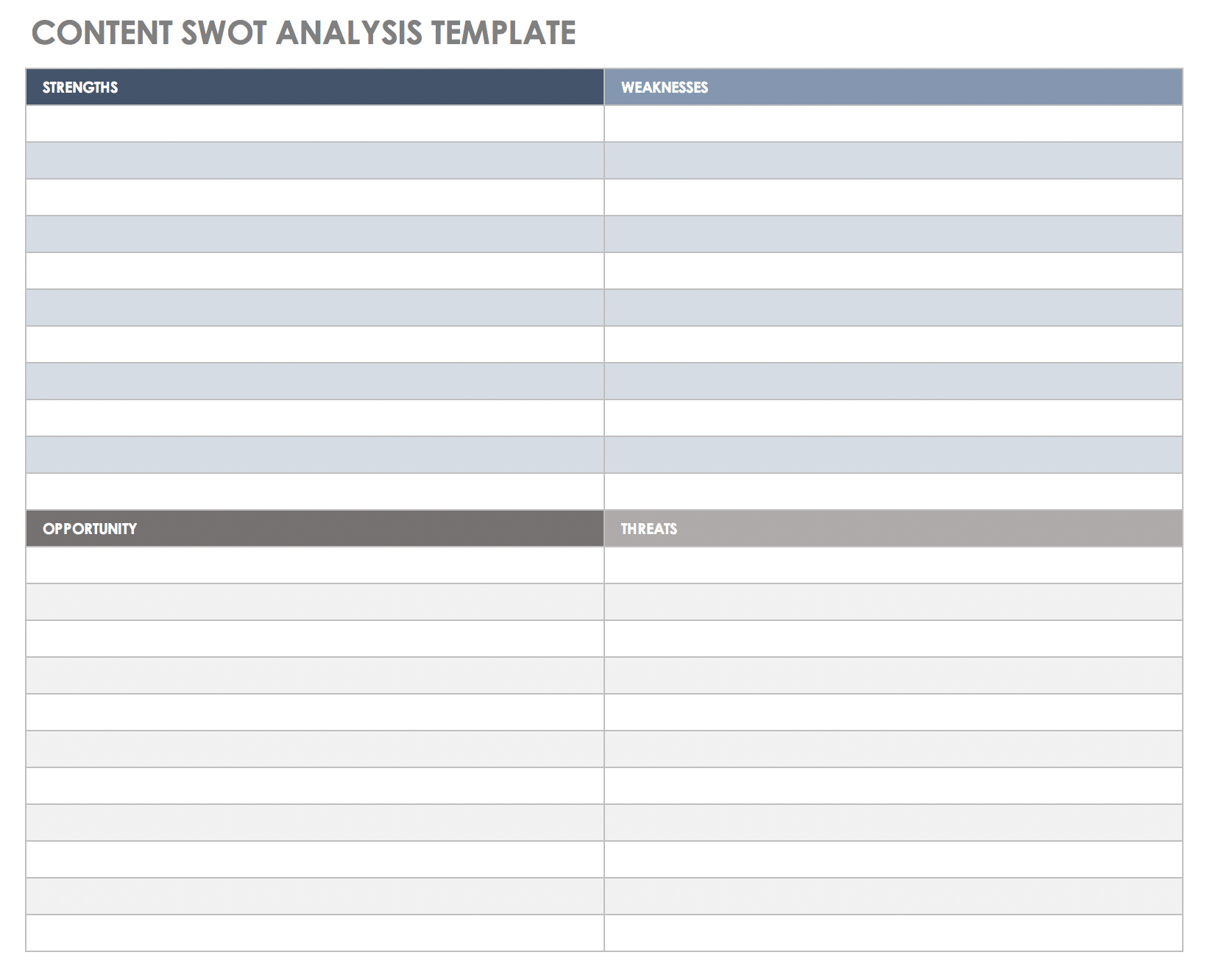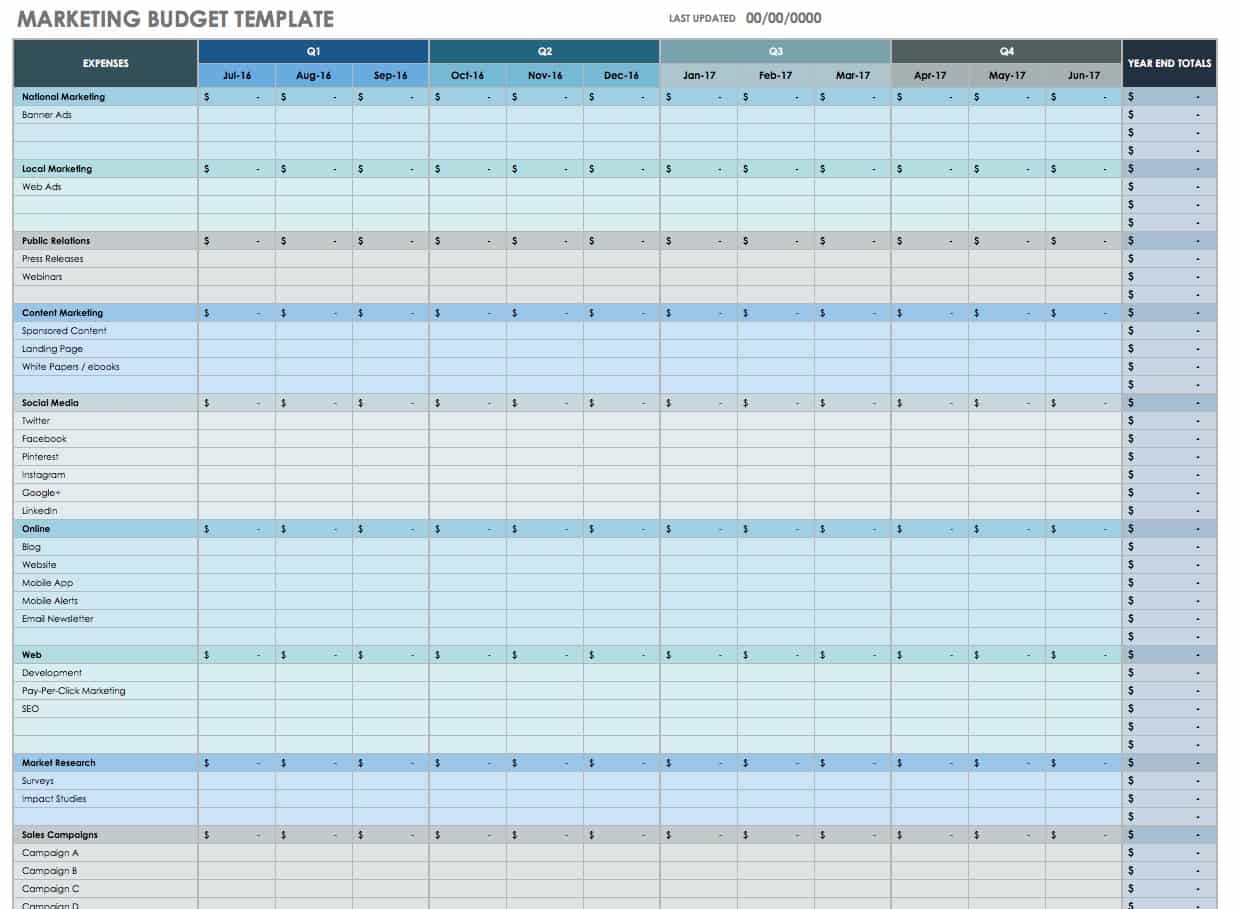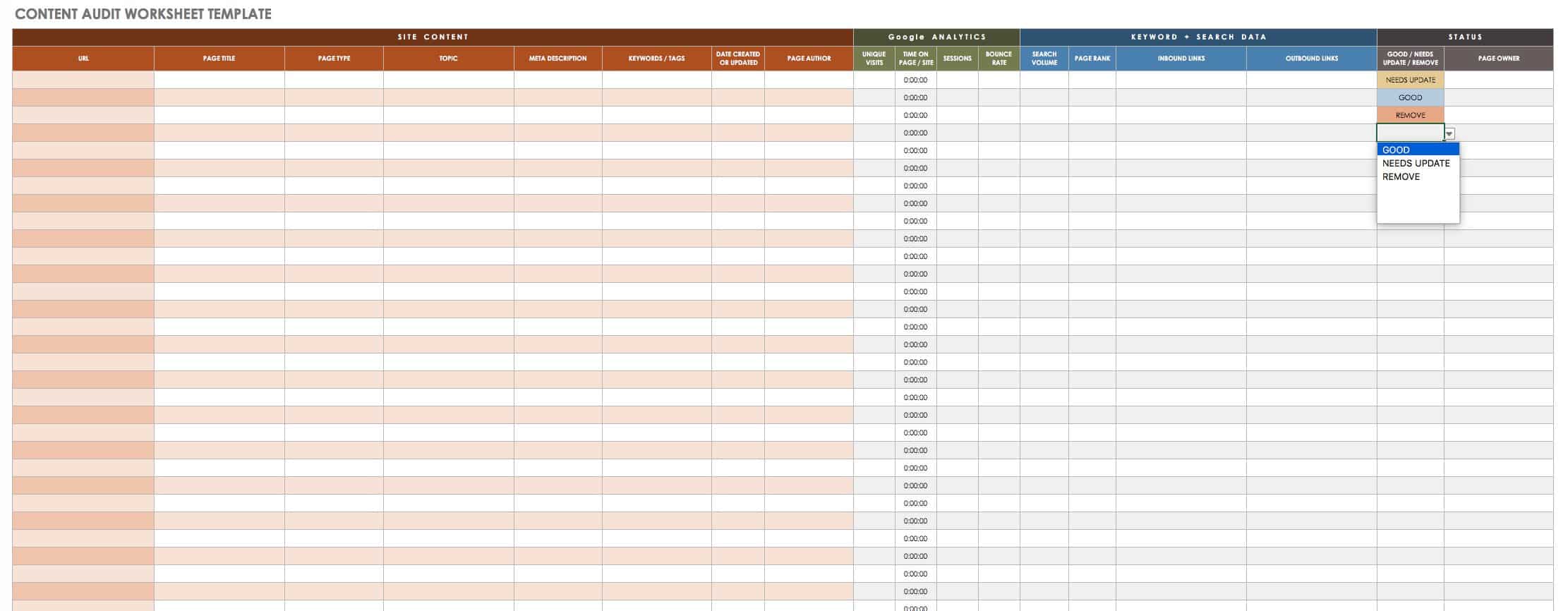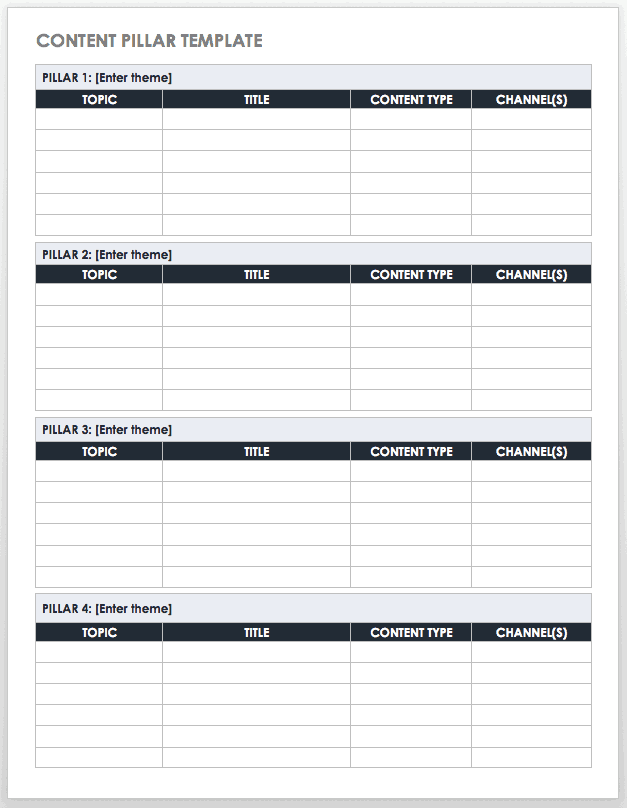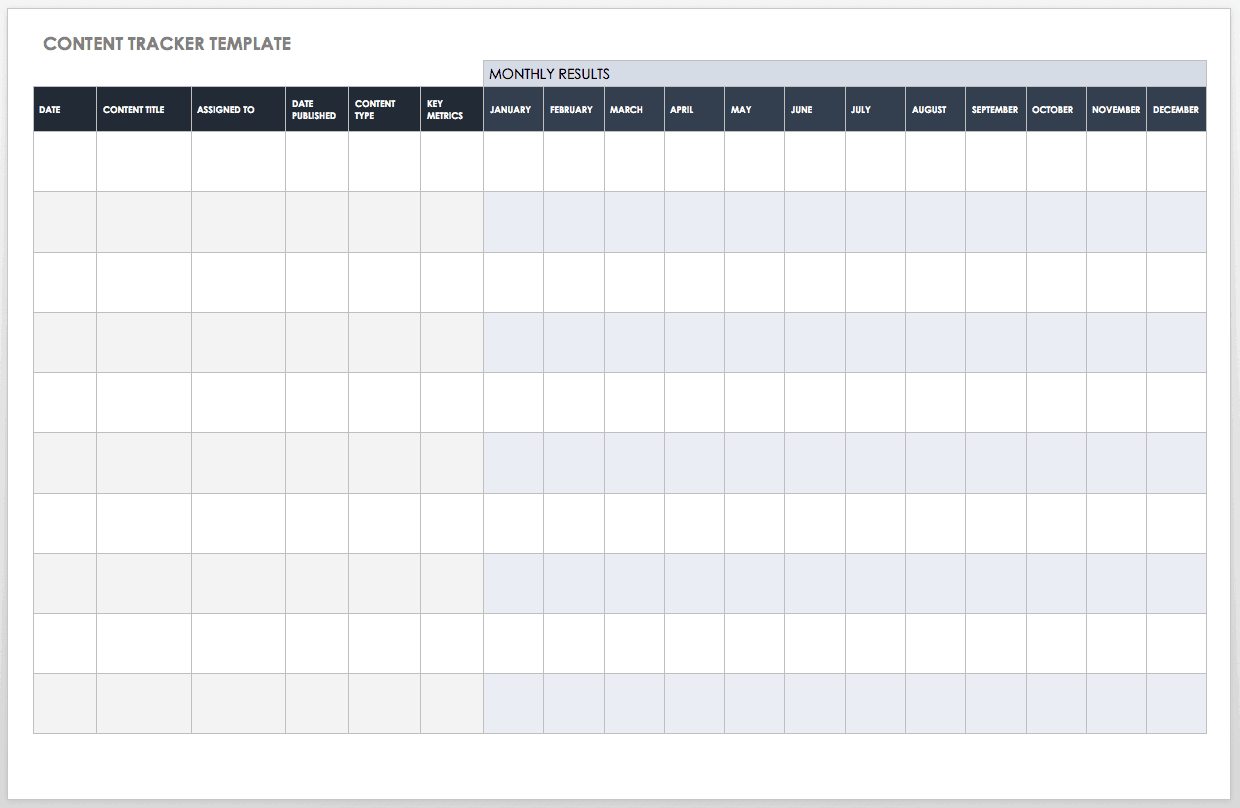What Is a Content Strategy?
A content strategy defines how and why content will achieve business and marketing goals. You need a strategy that determines content needs and why that content is the best choice.
Reaching your target audience requires an active approach that starts with a content strategy. Consumers want details. They want to learn something of value. They want to be engaged.
Content marketing, which is the result of a content strategy, focuses on offering the high-level engagement consumers demand. Content marketing goes beyond giving the customers what they want. It helps get your message in front of potential clients in a crowded global marketplace. Most companies rely on some type of content marketing. These businesses use online content that includes informational articles, promotional blog posts, podcasts, infographics, surveys, videos, and social media posts.
For content to be effective, it has to be well thought out and demonstrate how you and your products or services are superior. A content strategy should incorporate a journalistic “who, what, when, where” approach – know who is your audience, gauge what it is they want from companies, provide them with information when they want it, and share content where potential customers are most likely to consume it.
Your content strategy should include a mission statement that explains why the content strategy exists, the goal of the strategy, and who it benefits. Every piece of content that your team creates should point back to this mission statement. After you define your mission, you can create the content strategy, which should include the following elements:
- Goals: When identifying what you want to accomplish with your content, consider how it might increase brand awareness, generate leads, increase conversion rates, and encourage customer engagement.
- Success Criteria and Measurements: You’ll need to decide which success criteria and key performance indicators (KPIs) you’ll use to measure the effectiveness of your content marketing efforts. For example, did the content help increase website traffic, improve brand awareness, or generate new sales leads and convert them into new customers? Also consider other measurements such as growth in current customer retention and overall prestige, authority, and recognition within the industry and among the target audience.
- Target Audience: With an effective content strategy, you can identify the demographic most likely to be interested in your product or service. That requires understanding buyer personas, which you can define through market research and behavior studies that detail the audience's interests, jobs/incomes, spending habits, search tendencies, and the like. You may have multiple target personas that require different content. For example, a content strategy for teenagers will not be the same as one for parents purchasing for their kids. You need to use a variety of content strategies to cover a broader market share. Also, remember that each target persona consumes content differently, so you have to identify the best platform to reach them. While a parent may rely on Facebook and blog posts, the teenager may prefer Instagram and YouTube.
- Understand the Problem You Are Solving for Your Audience: Each audience has different needs and challenges. In your content strategy, account for educating the audience on how your product or service can solve their problem.
- Research Competitors and Your Industry: Do a thorough analysis of the products your competitors offer and how they approach their content marketing. How do you compare and compete? Download a free competitive analysis template to get started.
- Perform a Content SWOT Analysis: SWOT stands for strengths, weaknesses, opportunities, and threats. In the strengths quadrant, include content marketing efforts that work well. List any liabilities of your content marketing in the weaknesses quadrant. For the opportunities quadrant, include external content marketing opportunities in your market space. Finally, the threats quadrant should contain external content campaigns from competitors. See the example SWOT analysis below to get ideas on how to do your own
Strengths
|
Weaknesses
|
Opportunities
|
Threats
|
Download Content SWOT Analysis Template
- Review or Develop Brand and Product Messaging: Once you know your audience and how you measure up to the competition, ensure your brand and product messaging is up to date. Messaging drives all downstream marketing activities.
- Create a RACI Matrix: RACI stands for responsible, accountable, consulted, and informed. Use a RACI matrix to define team roles and individual responsibilities, so everyone understands their part in the content creation process. Learn more about this tool by reading “Comprehensive Project Management Guide for Everything RACI.”
- Define a Content Process: Once you know who you’re targeting and the type of content you need, select a content management system (CMS) to use for your workflow. The tool may be something like WordPress, or it could be a custom program. Get tips for picking the right solution by reading “Content Management 101: Discover the Best Approaches and Techniques.” After selecting a CMS, you can define the content creation workflow, including author assignment, outline creation, the editing process, approval, and publishing. You’ll also want to outline a process for using social media to share content to your target audience.
- Identify Resources: As the content plan comes into focus, you need to decide who is going to create the content. Will you outsource it to freelancers, use internal resources, or opt for a combination of both? Look at the skills and experience of existing staff, budget, and workload to see what makes the most sense. Also, evaluate the finances you have for creating content. Your budget may include expenses for a CMS, images, analytics, and freelancers — or maybe just two of those options. If it’s the latter, you may need to scale back your plan. Use this budget template to calculate and monitor your content marketing budget.
Download Content Marketing Budget Template
What Is a Content Plan?
The content plan is your blueprint for deciding what content to create. You can refer to the plan when choosing topics and content types, as well as managing content assets. A plan helps ensure content you produce is easy to find, relevant, and engaging, as well as aligns with business objectives.
As you move from strategy to content plan, consider the following questions to guide your process:
- Do your content topics align with your target personas, messaging, and value proposition?
- Is each content asset unique, valuable, and relevant?
- Do you offer a variety of content formats that meet your audiences’ needs: print, interactive, video, downloadable?
- Are there specific events that require specialized content assets?
- What content can you reuse?
- Does your content position your company as a thought leader in the industry?
- Do you have content assets that are relevant to each stage of the buyer’s journey? Your strategy should have two sides: prospective customers vs. current customers. Below is an example of content assets that can help you retain a customer to stay vs. converting a prospect to become a customer.
| Prospects | Customers |
|---|---|
| Competitive comparisons | Product tips and tricks |
| Educational white papers | Newsletter |
| Contributed articles | Knowledge base |
| Press releases | Templates |
| Guest blog posts | Education courses |
| Customer case studies | |
| Podcasts | |
| Templates |
Types of Content in a Content Plan
The types of content you can use are limited only by your budget and creators. Many options are available, but here is an example of the most common types of content and where they fit in the buyer’s journey.
| Goal | Content Type | Frequency | Metrics |
|---|---|---|---|
| Top of Funnel: Build awareness – content that helps the audience recognize their problems | Blog posts, e-books, white papers, educational content | Consistent activity that’s in line with the goals of a specific type of content and daily social media promotion | Impressions by channel, click-through rate, unique page views, time on site |
| Middle of Funnel: Consideration – content that helps the audience evaluate options | Videos, podcasts, expert guidance, webinars | As often as necessary to ensure the most accurate and competitive content is available | Referral traffic, social metrics, click-through rate, downloads, webinar participants |
| Bottom of Funnel: Decision – content that helps the prospect make a purchase | Case studies, product comparison templates, product content, product demo/test drive | As often as necessary to ensure content is fresh and represents the current state of your product/service or industry | Demo requests, sales conversions |
Why should you consider creating a content marketing strategy? Because it works. A content marketing strategy is an effective way to attract new customers, engage existing clients, and build relationships that result in future business. Great content lifts your reputation and sets you apart from your competitors.
In a crowded business world, the competition to rise to the top can be fierce. A well-produced content strategy and plan can drive awareness to your company and have your audience waiting for your next words.
How to Create a Content Plan in 5 Steps
Creating a content plan takes time, but is well worth the effort. By the end of the process, you’ll know what content you already have, what you need, and how to decide if your investment is paying off. Use the following steps to create a comprehensive content plan:
1. Perform a Content Audit
Your content plan begins with a look at your content. This thorough examination will provide a clear picture of existing content, what needs modification, what to retire, and what you still need to create. You’ll also want to assess content attributes, including the page title, keywords, inbound links, images, page visits, type of content, social shares, last update, author, and owner. During the audit, you’ll want to assign a status to each piece of content:
- Outdated and should be replaced
- Duplicate and redundant
- Needs an update
Use this content audit template to list all content assets, their status, current location, and other essential details. Use this spreadsheet to gain visibility into what you have, what you need, and new opportunities.
Download Content Audit Template
2. Review Your Ideal Client or Target Audience
Once your audit is complete, the next step is to review your ideal client or target audience defined in your content strategy. The goal is to get a clear picture of who you are writing content for.
Evaluate whether the audience that reads and engages with your content is your target group. If that’s the case, you need to build on what you’ve been doing right and highlight what makes you unique among your competition. If you’re not reaching the right audience, this is the time to review your messaging and materials to determine what’s not working and why.
To reach your target audience, create content that shows you are worth their attention. One option is to reach out to that audience with surveys, asking them to identify their top challenges, their desired material, and important topics. Also, follow your competition on social media (while not forgetting to listen to your own social media responses) and see what customers are saying – good and bad – about them. Use those comments to understand the competition’s strengths and weaknesses. With this information in hand, you can create powerful and engaging content for your audience.
3. Consider Your Brand
While your content plan should focus on reaching your target audience, you also need to pay attention to your brand. The right content will directly contribute to brand recognition. Produce content that represents and promotes your product or service, but also consistently highlights the uniqueness of your brand.
4. Define Content and Attributes
An audit can provide insight into the type of content you have and its effectiveness. That’s the starting point for creating new content. At this stage, determine which formats resonate with your audience. Whether they’re editorial pieces, podcasts, videos, infographics, or something else, you’ll want to establish publication frequency and location, such as blogs, content sharing platforms, and social channels. Now you can brainstorm for content topics. Tools are available to help with this step, such as BlogAbout, Google, BuzzSumo, AnswerthePublic, WordStream, and Moz’s Keyword Explorer. Want to get your team involved? Check out these brainstorming techniques to get the ideas flowing. Finally, assign content based on the workflow established in your strategy.
5. Publish and Analyze Results
Once content is written and published, it’s time to analyze the results. Read and consider all comments, and be ready to pivot to a new angle if the current one doesn’t resonate. You can measure content effectiveness with SMART (specific, measurable, achievable, realistic, time-bound) criteria. Learn more about SMART goals and download a template to get started. Assign KPIs for your content to evaluate and measure the efficacy of your messaging. You can use tools like Google Analytics and Facebook or Twitter Analytics to analyze performance.
Content Creation Plans
A content creation plan is unique to each organization. You can benefit from using an editorial calendar and social media content calendar to manage, control, and visualize the publication of content. Below are the basic steps to follow:
- Audit existing content
- Discard what does not work
- Build on successful content
- Find a good stable of writers
- Define a regular publishing schedule
- Analyze results
You don’t have to build your plan from scratch. See what has been successful for others and use these examples and templates as a guide. Here are a few to get you started:
Below is a content planning template to organize content throughout the buying cycle.
Download Content Plan Template - Excel
This content pillar template is useful for content planning based on your most important topic areas. You can identify content types and publication channels that provide the most return for your business.
Download Content Pillar Template
Excel | Word | Smartsheet
Use this content tracking template to gain visibility into content detail, owner, writer, dates, and performance metrics. By monitoring metrics, you can continually improve your content.
Download Content Tracker Template
Excel | Word | Smartsheet
For more free downloadable resources and tips, visit "Free Content Plan Templates and Samples."
Why Do Companies Need to Create a Content Marketing Strategy?
A solid content marketing strategy improves your credibility and builds trust with customers, according to 96 percent of the respondents to MarketingProfs’ 2019 B2B Content Marketing research. More than three-quarters of those surveyed said they rely on educational content to nurture their audience’s needs, and successful content marketers say they use content to prioritize their audience’s informational needs.
Well-planned content attracts potential customers. While you always want to have appropriate content available (for example, anything related to a global pandemic has been a content driver in 2020), it is equally important to have plenty of evergreen content. “Traditional marketing techniques are no longer as effective as they used to be. Consumer content is increasing exponentially,” says Michael Brenner, CEO of Marketing Insider Group. “Only a content strategy can save marketing and maybe your entire business.”
Effectively Implement Your Content Strategy with Smartsheet for Marketing
The best marketing teams know the importance of effective campaign management, consistent creative operations, and powerful event logistics -- and Smartsheet helps you deliver on all three so you can be more effective and achieve more.
The Smartsheet platform makes it easy to plan, capture, manage, and report on work from anywhere, helping your team be more effective and get more done. Report on key metrics and get real-time visibility into work as it happens with roll-up reports, dashboards, and automated workflows built to keep your team connected and informed.
When teams have clarity into the work getting done, there’s no telling how much more they can accomplish in the same amount of time. Try Smartsheet for free, today.
